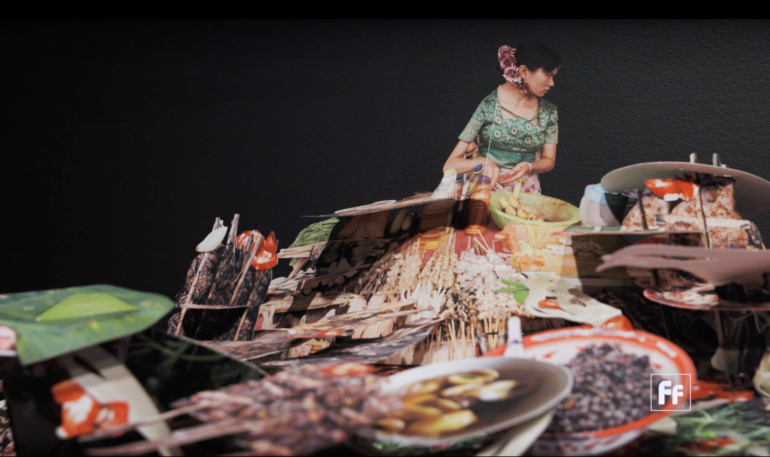Through words, visuals and dance, Full Frame meets three artists of Asian descent who are contributing to a global understanding of their cultures and creating new visions of the world.
Future China
Hao Jingfang is a Beijing-based science fiction writer whose work explores dystopian futures. Trained as an economist, Hao’s writings highlight the inequalities she sees today in modern society.
This divide can be so stark, Hao says, that someone who comes from a high-earning, white-collar life “will never even encounter another person who is struggling in life.”
Hao won a Hugo Award for her novella, Folding Beijing, where the capital is divided into three spaces that circulate and come out to sunlight for varying amounts of time. Her story is being adapted into a film.
Writing about the future is like a “mental experiment,” Hao said. “There is always the question, What would change? What would not? And where is that direction?”
Universal Language
Choreographer Dana Tai Soon Burgess uses movement to draw out universal themes of identity, acceptance and cultural heritage.
Burgess, a former dancer, finds inspiration in his own roots — a Korean mother and a European, Mandarin-speaking father, both artists.
“I look at the stage as a canvas and I look at the dancers almost like ink strokes,” Burgess said.
Burgess has choreographed performances based on Asian-American perspectives, as well as his own family’s experience of moving to Hawaii to work on plantations. Another work explores the Chinese Exclusion Act that halted Chinese immigration to the United States.
He’s now the the Smithsonian Institution’s first choreographer-in-residence, developing dance performances based on exhibitions at the National Portrait Gallery in Washington, D.C.
“Through dance, we can enliven a story,” he said. “History, for me, is a series of stories and lessons which resonate with current audiences.”
A Pop of Culture
Pop-up books are often thought of as a way to fascinate and educate children. But these movable books, as they were once called, were originally meant for adults. Photographer Colette Fu is using pop-up photography to reach across generations and help preserve her culture.
In 2008, Fu received a Fulbright scholarship to create a photographic pop-up book portraying the 25 ethnic minority groups of China’s Yunnan Province. She spent that year traveling in China and devoted the following year to bringing her pop-up images to life.
“In the end I’d like to educate people,” Fu said. “China’s not just this big country of what people associate what China as. It’s very diverse.”
 CGTN America
CGTN America
